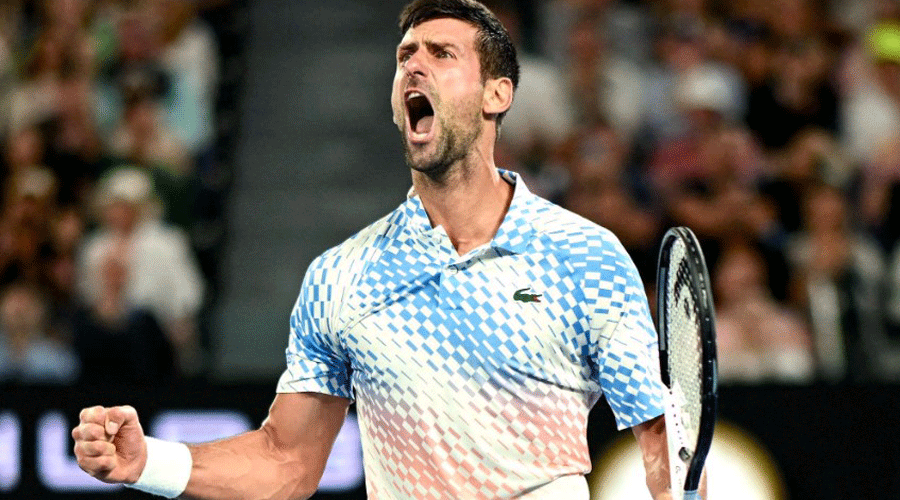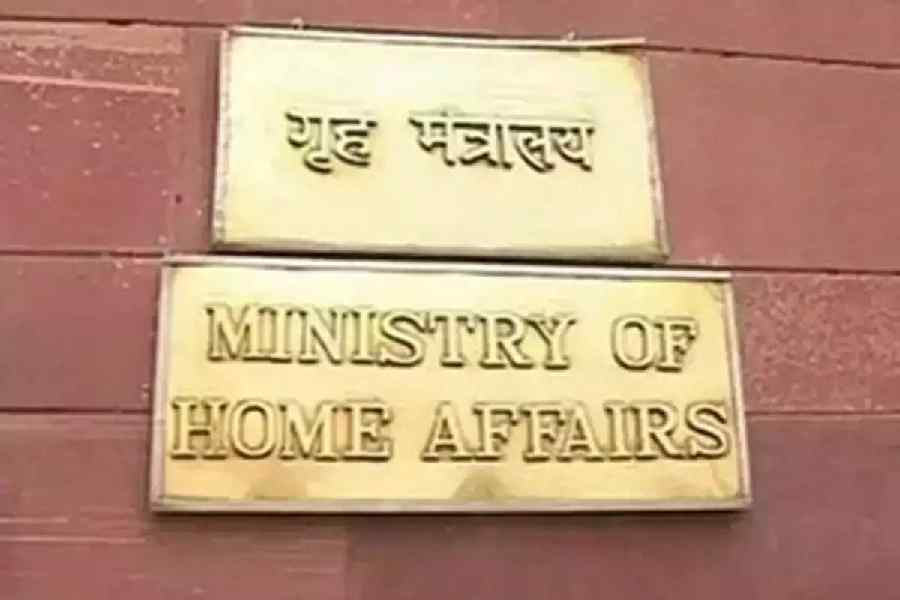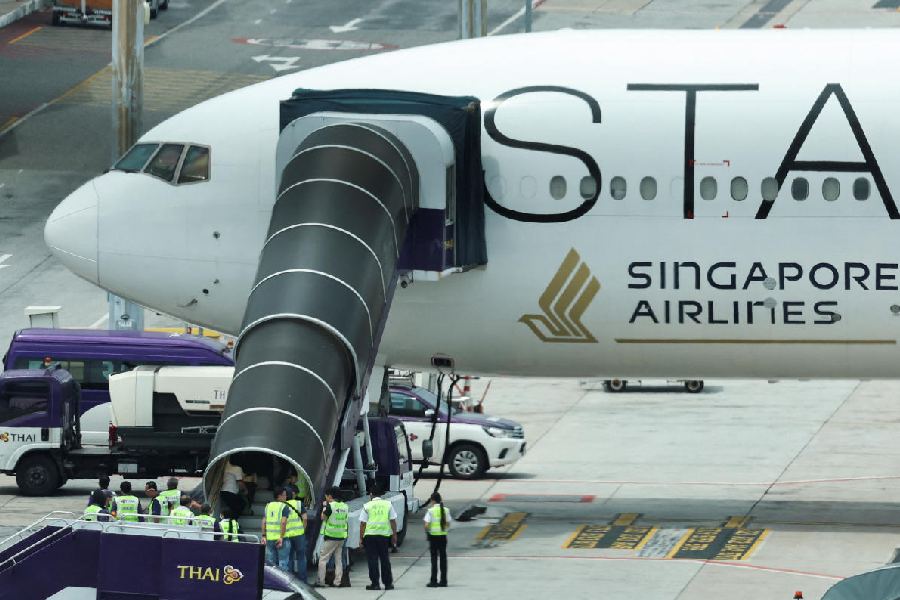Novak Djokovic came to Australia with a mission, or really a series of them. To win the championship he had won nine times once more.
To win a 22nd grand slam men’s singles title and draw even with his rival Rafael Nadal at the top of the list. To remove any doubt anyone might have about whether he remains the world’s dominant player, the most commanding player of the last decade and now this one, too. To show the world that the only way to keep him from winning nearly any tennis tournament is to not let him play.
Check. Check. Check. And check.
A year after Australia deported him over his refusal to be vaccinated against Covid19, Novak Djokovic reclaimed the grand slam title he has won more than any other, capturing a record 10th championship at the Australian Open by beating Stefanos Tsitsipas 6-3, 7-6 (7-4), 7-6 (7-5) on Sunday.
After one last forehand off Tsitsipas’s racket floated long to end a match that felt lopsided despite the two tie-breakers, Djokovic turned and stared at his relatives and coaches sitting in his box. He pointed to his head, his heart, and then just below his belt, letting the world know it took everything to win one of the most momentous championships in a career that has been filled with them.
Then he put on a jacket with a bright number 22 just under the right side of his collarbone.
“Dare to dream,” Djokovic said to the crowd as he held the winner’s trophy. “Don’t let anyone take that dream away from you.”
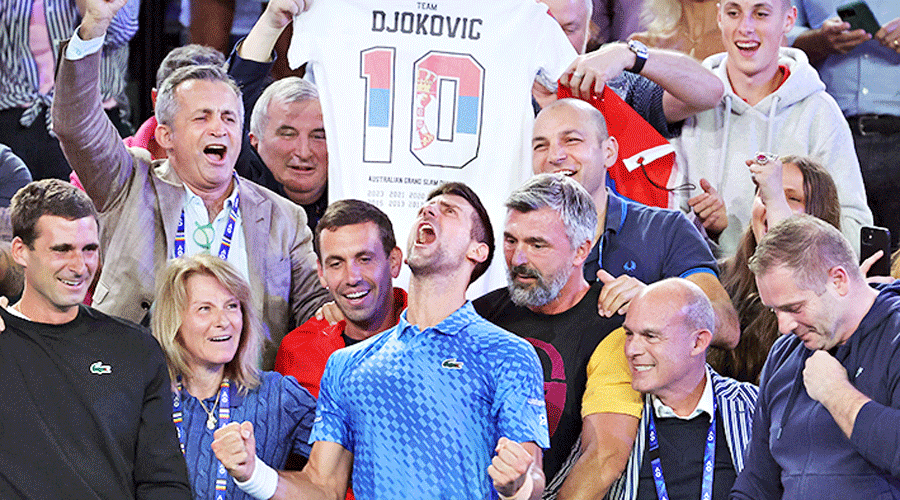
Novak Djokovic’s emotions say it all as he celebrates with his team. Getty Images
He called this triumph “the biggest victory in my life.”
In addition to gaining pole position to surge past the injured star Nadal on the career Grand Slam list — and in the GOAT debate — Djokovic also reclaimed the top spot in the world rankings, making him, at 35-years-old, the second-oldest player to reach that rarefied realm, behind only Roger Federer who was nearly 37 during his last stint on top of the tennis world.
Djokovic turns 36 on May 22. Probably a bad idea to bet against him taking that record from Federer, as he has so many others.
The feat is even more noteworthy given how much tennis Djokovic has had to miss in the last year. He can’t play in the US because of his refusal to get a Covid-19 shot. Unless there is a change in the policy, he will miss major tournaments in Indian Wells, Calif. once again in March, and the hard court swing this summer, which includes the US Open.
He is either stubborn or a man of principle — more likely both.
Djokovic’s score sheets in this tournament might suggest that these last two weeks were a little more than a vacation Down Under with some tennis thrown in. He dropped only a single set in seven matches. His fourth-round, quarter final and semi-final tests were near-complete wipeouts of opponents.
When Djokovic is on like he was in the second week of this tournament, his game is all about firsts. Line-scraping first serves that give him the first point of his service games. First breaks of his opponents’ serves that become a first dagger, and first-set wins for a player who rarely lets anyone creep back into a match.
He does not let opponents catch their breath, smacking returns at their shins, forcing them to hit yet another shot, and then another one after they think they have won a point. It’s tennis a form of suffocation.
But Djokovic’s reclamation mission in Australia was filled with hazards. Ahead of the tournament he aggravated his hamstring. He hobbled through the first week, playing without the magical movement that is the foundation of his game.
And then, as with so many of his previous injuries, a combination of rest, massages and painkillers made the pain and discomfort go away when it mattered most. He heard the noise on social media questioning whether the leg had ever been hurt at all, and shot back that no one questions the validity of other players’ injuries — an unsubtle referenceto the always banged-up Nadal— only his.

A half-decade ago Tsitsipashad seemed assured of reaching the pinnacle of the sport he has dedicated himself to since he was a small boy. He’d come close to doing it two years ago in Paris, holding a two-set lead against Djokovic in the French Open final before Djokovic stormed back to beat him in five sets.
Maybe Sunday night in Australia, where the large, spirited Greek population have turned Tsitsipas into an adopted son, would be different, especially with the No.1 ranking on the line. Then again, maybe not. Tsitsipascame out without the ease and fluidity that he had played with for nearly two weeks, and fell behind.
“He’s the greatest that has ever held a tennis racket,” Tsitsipas said of Djokovic ashe held his runner-up plate once more.
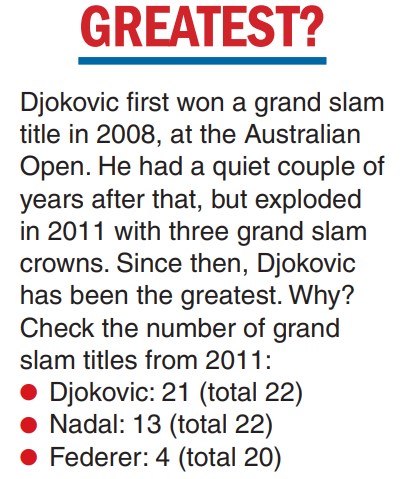
Djokovic is the game’s best front-runner, winning roughly 95 per cent of his matches when he wins the first set. He has lost a two-set lead only once, 13 years ago.
They traded service breaks in the first two games of the third set, then traded service games until yet another tie-breaker. As Djokovic tightened his game and Tsitsipasswung his racket with nothing to lose, there was little question how this would end, only when.
New York Times News Service

